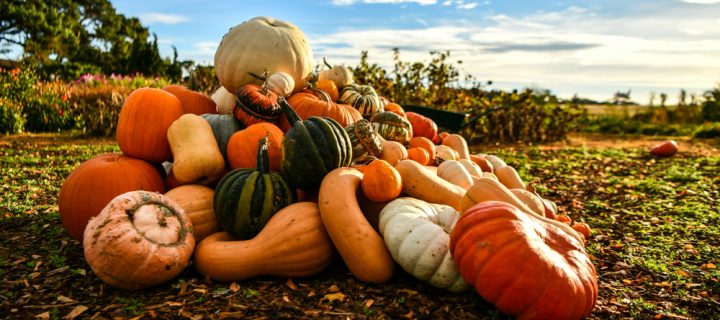Decorative gourds shouldn’t be eaten as they can cause nausea.
Fall is closing in and the days are getting shorter in the northern hemisphere. The autumnal equinox, the day during which when the sun sits directly over the Equator and divides daylight and night into two equal amounts, is around September 22. With fall come so many symbols and familiar feelings, two of which are squash and gourds. Pumpkins and decorative gourds adorn our doorways and tables in fall, adding warm colors that reflect the “setting of summer”.
If you have a garden, you may be tempted to toss your used pumpkins and gourds in the soil to rest for the winter as a form of compost, readying the soil for next spring. If you’re lucky enough, some of the seeds inadvertently sown might just turn into new crops to be harvested next year. But gardeners need to be wary of certain types of gourds and pumpkins: not all are edible. And it can be difficult to tell the difference. It turns out, there’s a reason some pumpkins are labeled “pie pumpkins,” while others are best for carving and small gourds are often best left on the mantelpiece. Check it out.
You can be easily poisoned by your gourds and squash
Gourds and pumpkins come from the Cucurbitaceae plant family of flowering plants. This family is composed of gourds, cucumbers, melons, pumpkins, and squashes. While many of the plants in this group can be readily eaten, some cannot. For example, decorative gourds contain cucurbitacins which are toxic to humans. If you eat them, they taste bitter and can cause stomach pain, as well as nausea and vomiting.
Related: Genetically Modified Foods: the Pros and Cons and What You Should Know
When things get too bad, this process can lead you to be severely dehydrated and require hospitalization. The goal of cucurbitacins is to repel insects and other pests that may attack the plant while growing in your garden, but they can also harm you.
How to know what you’re eating is safe
Generally speaking, in order to keep your diet safe, only eat gourds and pumpkins advertised as edible and for sale at your local grocery store. Never eat ornamental gourds. When it comes to squash from your own garden, avoid those plants that may have cropped up spontaneously from last years’ seeds still in the ground. These may have been edible the first time around but can easily develop into a new hybrid “in the wild” so to speak. If you’ve grown edible and decorative plants in the same garden patch, this is particularly true. The inedible gourds that can result from the hybridizing effect can appear to be exactly the same as their edible counterparts from last year. Steer clear if you detect any type of bitter taste.
Buy new seeds each type you grow your squash. These have been reviewed judiciously by experts in farming to ensure they won’t grow inedible plants in your garden.
Enjoy the new season!
photo credits: Anna Derewacz-Czuprynska/Shutterstock.com











